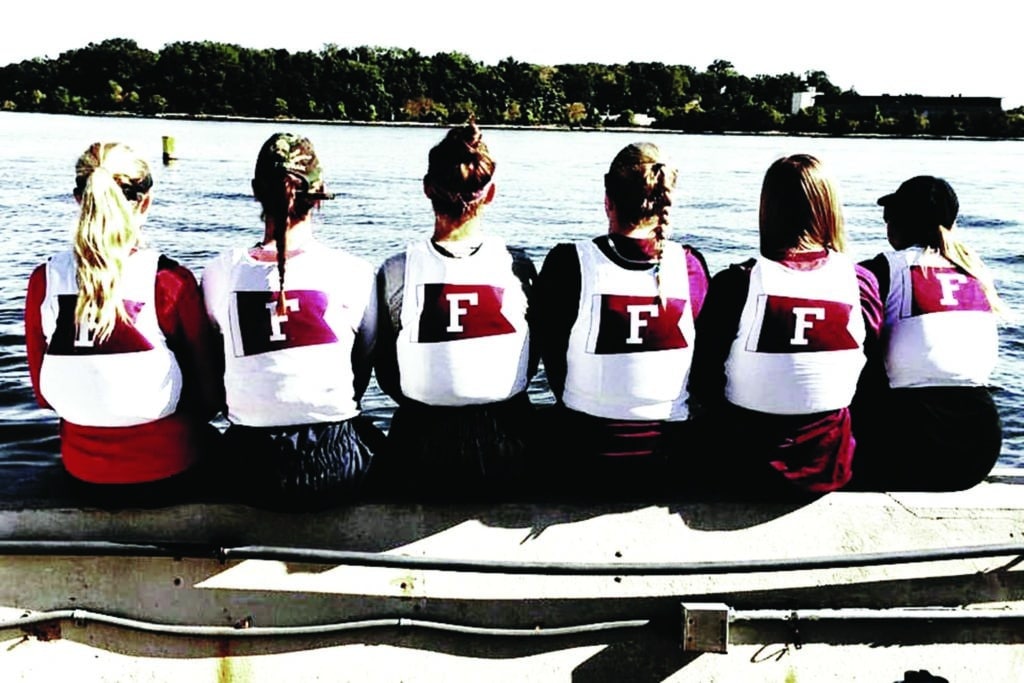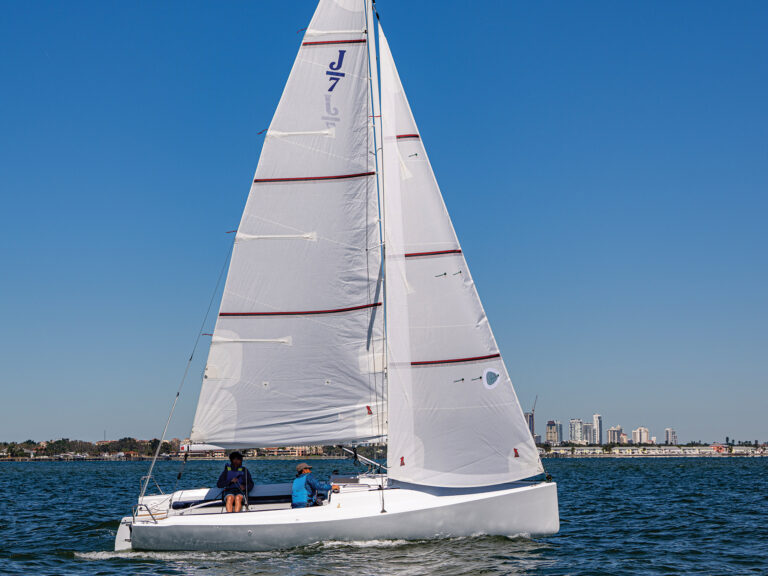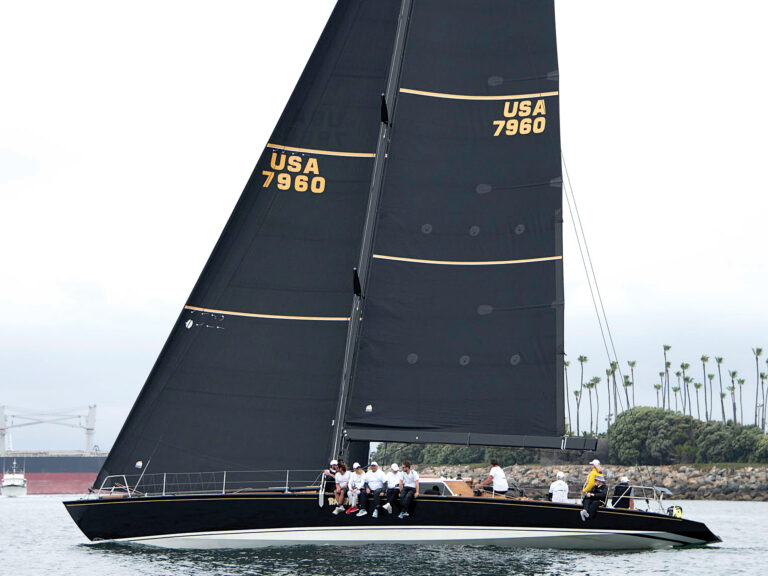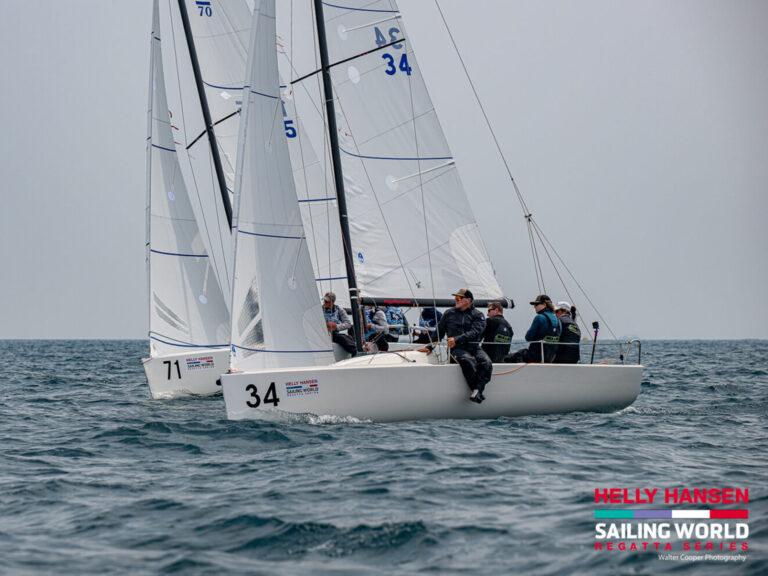
Imagine that you are a high school student and a good one, with high hopes for your future. Even though you love sailing, you pick a college based on how well it can help you achieve your career dreams. Then you get to campus and discover that something is missing. Not only do you miss your hometown and your friends, but you also miss your sport. Perhaps your college has never had a sailing team. Maybe it had a team at one time, but membership levels and enthusiasm have seriously diminished. What can you do? Surprisingly, some of the most important factors in resurrecting a sailing program may not be the boats, money or logistics — instead, the answer is the people. Here are a few things you can do to create a growth-oriented program with a hot attitude about the future.
Although they enjoy racing, members of the University of California, San Diego sailing team view promoting the sport as part of their mission, so they take all comers to their sailing program. Co-captain Sam Rohrbach sailed for the first time the summer before he started college. He took a trip organized by UCSD that involved sailing for a week on a tall ship, where he met a lot of great people, including someone who was an experienced sailor and who convinced Sam to join the sailing team. The three captains and two volunteer coaches gave him fairly formal lessons in the sailing basics. New club members are taught to sail and race through a combination of good coaching and a lot of practice — usually about 15 to 25 hours per week. After that initial instruction, Rohrbach says, it was trial by fire. He had sailed only a few times before his first regatta.
Rohrbach’s experience wasn’t too different from most other people’s on the UCSD team — roughly 80 percent of them never sailed before joining the club. A club fair held at the beginning of the year helps recruit new members, but many join based on word of mouth from other members. The UCSD sailing team is currently operating at a capacity membership level and competes in the Pacific Coast Collegiate Sailing Conference.
Syracuse University’s sailing team had diminished from its glory years. Even though the club sports team was founded in 1937, a lack of interest closed it down for a while. When the sailing team was founded again in 2010, the five students kick-starting the program recognized that to get people interested and committed, the social aspect of the club had to be as important as the regatta schedule. This was particularly important because their local sailing venues are frozen for much of the academic year. Maintaining a team that would still be connected and energetic when the lake thawed required scheduling a variety of events in addition to race training. As Valerie Wiehl, one of the current commodores, reports: “ We had a sailing team formal this year. We brought in sailors from Hobie Fleet 204 to do winter chalk talks on sailing and racing tactics. We’ve gone bowling, apple picking and ice skating. As a result of all of this, we’re close friends — family, even.”
SU Sailing Club now numbers more than 100 members. They have to hold their practices in shifts because there are many more members than spots on the 420s and FJs. Syracuse finished fifth overall (out of 18) at MAISA Club Championships in the fall of 2015.
No sailing program? This was exactly the dilemma faced by Sebastian Mettes when he transferred to Quinnipiac University in 2013. In his first few months there, Mettes met several other students who were also frustrated sailors. He felt that a sailing club would probably attract a fair number of members, so Mettes set about trying to start one from scratch. What evolved has been a kind of partnership between the Quinnipiac Sailing Club and the local sailing community.
Because Mettes had been sailing and racing Hobie 16s near Denver before he moved to Connecticut, he decided to give his local Hobie fleet a call for help.
“The support of Fleet 448 [in Rhode Island] has been integral to the success of the club,” says Dana Meixell, current vice commodore of the Quinnipiac Sailing Club. “They went out of their way to help us get started. Several fleet members came with boats to Connecticut to train us; they even barbecued for us. They are as passionate about teaching us sailing and racing as we are about learning it.”
Sprite Island YC in Norwalk, Connecticut, also offered help in getting the new team on the water, thanks to member Bob Keyes, who invited the Quinnipiac club to sail their 420s, Hobie 16s and Hobie Waves. Additionally, nearby Yale University’s sailing team has been generous and supportive, allowing the fledgling Quinnipiac club to use boats and facilities on occasion. The net result of all this interaction with the community has meant that more than 70 students have been able to sail so far this year at Quinnipiac, and they can’t wait to get back on the water in the spring.
In 2000, the Fordham sailing team was revived after 27 years thanks to the combined commitment of student members and alumni. Cristina Puglia, sailing director and former team captain, says this winning combination helped set big goals for the team that have been endorsed by each subsequent team: 1) to win a national championship, 2) to improve the sailing skills of all team members, and 3) to have fun doing so. The students also wrote a five-year plan that covered funding, equipment, racing associations and home port, which has become a living document that is regularly revised. By working closely with the “Afterguard” (sailing team alums), these students and their coaches ran sailing at Fordham as a “club sport with a varsity mindset.” The alumni help with generating on-campus interest in sailing, running drills, and organizing other alumni to continue supporting the team.
Since the initial resurgence of the team, a fair number of members have graduated and become members of the Afterguard, and alumni continue to play a very active role in guiding the sailing team, helping it raise funds to support the cost of competition. Dedicated students coupled with alumni support has paid off, resulting in five MAISA Club Team Championships over the last decade. Last year, Fordham enjoyed its most successful season, participating in two national championships — Coed and Team Racing — and ending 14th (11th overall, second club team) and 11th (14th overall, first club team), respectively.
Although everyone knows students go to college so they can become valued members of the workforce, academic endeavors comprise only one part of the collegiate experience. College sailing programs help ensure that great memories made on the water are valuable as well. By welcoming new members, building a team out of them, and getting support from both the community at large and your alumni, you can ensure that sailing at your college will be available for years to come.









